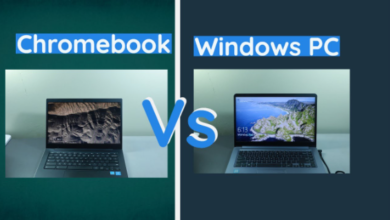
Blockchain Solutions for Digital Rights Management in the Entertainment Industry
In the digital age, content creators and artists face significant challenges in protecting their intellectual property rights and ensuring fair compensation for their work. Piracy, unauthorized distribution, and lack of transparency in royalty payments are widespread issues plaguing the entertainment industry. However, blockchain technology offers innovative digital rights management (DRM) solutions, providing creators with secure and transparent mechanisms for managing and monetizing their content. In this blog post, we’ll explore the potential of blockchain solutions for DRM in the entertainment industry, focusing on the role of white label crypto exchange in supporting these initiatives.
Understanding Digital Rights Management:
Digital Rights Management (DRM) refers to the technologies and processes used to control access to digital content and enforce usage rights and restrictions. DRM systems enable content creators and rights holders to protect their intellectual property from unauthorized copying, distribution, and consumption while facilitating secure and transparent content licensing and monetization transactions.
Challenges in Traditional DRM Systems:
Traditional DRM systems are often centralized and proprietary, relying on intermediaries such as content distributors, streaming platforms, and collecting societies to manage and enforce rights. However, these systems are susceptible to inefficiencies, data breaches, and disputes over ownership and royalties, leading to friction and mistrust among stakeholders.
Blockchain-Based Solutions for DRM:
Blockchain technology offers a decentralized and immutable ledger for recording and managing digital assets and transactions, making it an ideal solution for DRM in the entertainment industry. Here are some key features and applications of blockchain-based DRM solutions:
1. Immutable Ownership Records:
Blockchain enables the creation of tamper-proof records of ownership and rights for digital content, including music, videos, e-books, and artwork. Each transaction on the blockchain represents a transfer of ownership or licensing rights, providing a transparent and auditable trail of content ownership.
2. Smart Contracts for Royalty Payments:
Smart contracts, self-executing contracts with the terms of the agreement directly written into code, can automate royalty payments to content creators based on predefined conditions and usage metrics. Smart contracts ensure that creators receive fair compensation for their work transparently and timely, eliminating delays and disputes associated with traditional royalty collection processes.
3. Content Licensing and Distribution:
Blockchain-based DRM platforms enable secure and transparent licensing and distribution of digital content through tokenization. Content creators can tokenize their works as non-fungible tokens (NFTs), representing unique digital assets with built-in rights and ownership information. These NFTs can be traded, sold, or licensed on blockchain-based marketplaces, providing creators with new revenue streams and monetization opportunities.
Benefits of Blockchain-Based DRM:
Blockchain-based DRM solutions offer several benefits for content creators, rights holders, and consumers, including:
1. Enhanced Security:
Blockchain’s decentralized and immutable ledger ensures that digital assets and ownership records are secure from tampering, piracy, and unauthorized access.
2. Transparency and Accountability:
Blockchain provides transparency and traceability throughout the content lifecycle, enabling stakeholders to track real-time ownership, usage, and royalty payments.
3. Fair Compensation:
Blockchain-based DRM systems automate royalty payments and ensure creators receive fair compensation for their work, fostering trust and collaboration in the creative ecosystem.
4. Decentralization:
By eliminating intermediaries and central authorities, blockchain-based DRM platforms empower creators and rights holders to maintain control over their content and negotiate directly with consumers and licensees.
The Role of White Label Crypto Exchanges:
White-label crypto exchanges can play a pivotal role in supporting the development and adoption of blockchain-based DRM solutions by providing secure, transparent, and decentralized platforms for managing digital assets and transactions. Here’s how:
1. Tokenization of Digital Assets:
White-label crypto exchanges enable content creators to tokenize their digital assets, such as music tracks, videos, and artworks, as NFTs on blockchain-based marketplaces. These NFTs represent unique digital collectables with embedded rights and ownership information, facilitating transparent and decentralized content licensing and monetization.
2. Secure and Transparent Transactions:
White-label crypto exchanges leverage blockchain technology to ensure secure and transparent transactions for buying, selling, and licensing digital content. By providing a decentralized platform for content exchange, these exchanges enhance trust and integrity in the DRM ecosystem, fostering fair compensation and collaboration among creators, rights holders, and consumers.
3. Decentralized Governance:
Blockchain-based governance mechanisms, supported by white-label crypto exchanges, enable decentralized decision-making and accountability in DRM platforms. By establishing transparent voting mechanisms, consensus algorithms, and governance frameworks, these exchanges empower stakeholders to shape the direction of DRM initiatives and ensure alignment with ethical and regulatory standards.
Conclusion:
Blockchain technology has the potential to revolutionize digital rights management in the entertainment industry, providing creators with secure, transparent, and decentralized mechanisms for protecting and monetizing their content. By leveraging blockchain-based DRM solutions and supported by white label crypto exchanges, content creators, rights holders, and consumers can collaborate in a trustless and fair ecosystem, unlocking new opportunities for creativity, innovation, and value creation.




